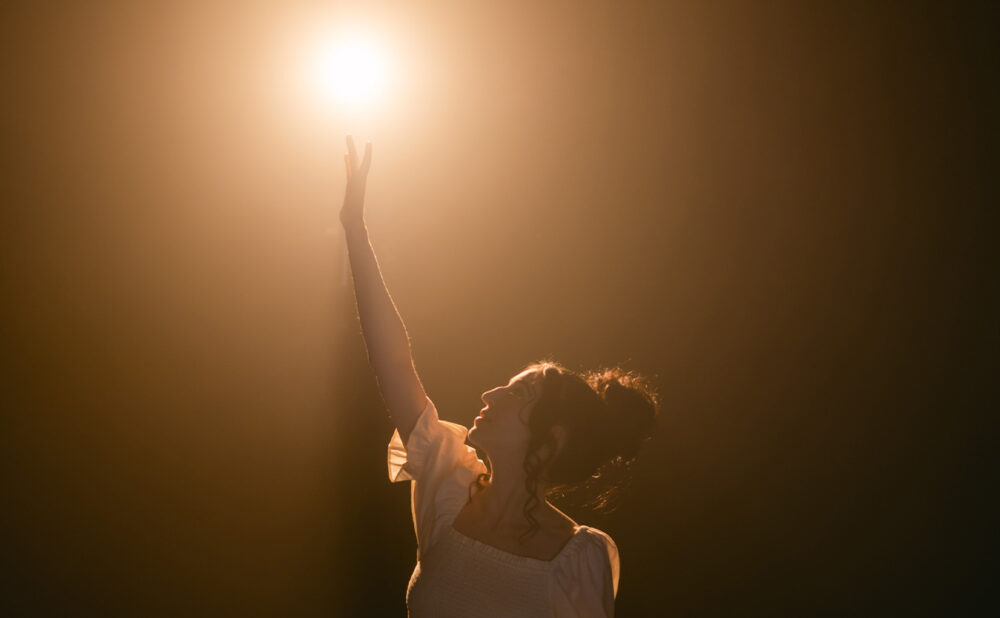Review: ‘Natasha, Pierre & The Great Comet of 1812’ at Crow’s Theatre finds beauty in chaos
Acclaimed musical adaptation of ‘War and Peace’ makes splashy Canadian premiere

What: Natasha, Pierre & The Great Comet of 1812
Where: Crow’s Theatre, 345 Carlaw Ave.
When: Now, until Sun., Jan. 28
Highlight: Kimberly Purtell’s clever use of onstage lighting sources
Rating: NNNN (out of 5)
Why you should go: Chris Abraham’s complex, movement-heavy staging is as detailed as the material itself.
FROM The Master Plan to Uncle Vanya full-scale Crow’s Theatre productions directed by company leader Chris Abraham are designed to overwhelm. Sets stretch to the ceiling, details hide around corners and the audience lines multiple walls, allowing for supreme intimacy. In these arenas of splendour, cake-splattered bodies skirmish without restraint as dramatic conflict blazes with volcanic heat.
These methods are doubled down on in his Canadian premiere staging of Natasha, Pierre & The Great Comet of 1812, a collaboration between Crow’s and the Musical Stage Company. An exhilarating work of chaotic beauty, the production is expensive, immersive and raucous; it whizzes along like a sports car, leaving destruction in its wake.
Dave Malloy’s acclaimed sung-through musical is a rowdy adaptation of a small section of Tolstoy’s War and Peace. The audience is given a printout of a family tree to help them follow the complex plot — but the key action revolves around passionate 19-year-old Natasha (Hailey Gillis). Though betrothed to a soldier away at war, she arrives in Moscow and quickly falls for the cartoonishly charismatic Anatole (George Krissa), who’s secretly married. With several older Moscow aristocrats in the mix, including the sombre Pierre (Evan Buliung), this romance plot fuels drama of operatic proportions. A borderline experimental score packed with accordions, bizarre time signatures and electronic flourishes helps bring the winding narrative to life.
Joshua Quinlan and Julie Fox’s set vibrates with opulence. Red velvet curtains surround the thrust stage and mirrors cover much of the back wall, while a newly installed balcony hosts the band (led by Ryan deSouza), a small portion of the audience and, occasionally, the actors. A square, manually operated turntable occupies centre stage. Lighting designer Kimberly Purtell adds to this grandeur with several onstage light sources, including chandeliers and LED-like strips.
Though Gillis and Buliung play the titular roles with depth, Natasha, Pierre & The Great Comet of 1812 is an ensemble show. The actors take a fairly unified approach: they work against the heightened performance style typical to musicals, instead opting for a more grounded delivery. This means the production almost feels like a straight play at times — surprising, given the material’s chaotic nature.
But the most profound element of Abraham’s production is its exploration of movement. The actors are constantly darting about the space, tracing out complex shapes and encouraging audience members to shift their gaze, like at a tennis match. Circles abound, with the turntable’s spin creating a kind of whirlpool effect. (Choreographer Ray Hogg was no doubt key to the coordination of this action.)
Beautiful stagecraft is often thought of as a series of striking stage images. I don’t know that this production has many such individual moments; instead, it’s about poetry in motion, energy brushed about like paint. The mirrors help with this: though they confuse static images by reflecting light every which way, they add further depth to movement by doubling it up (as anyone who’s seen A Chorus Line knows). I’m reminded, too, of the preprogrammed lights that followed the actors of The Master Plan as they traversed the space. Abraham’s productions are characterized by this intoxicating locomotion: laugh at the troika driver’s jokes or be thrown off to freeze in the Russian snow.





